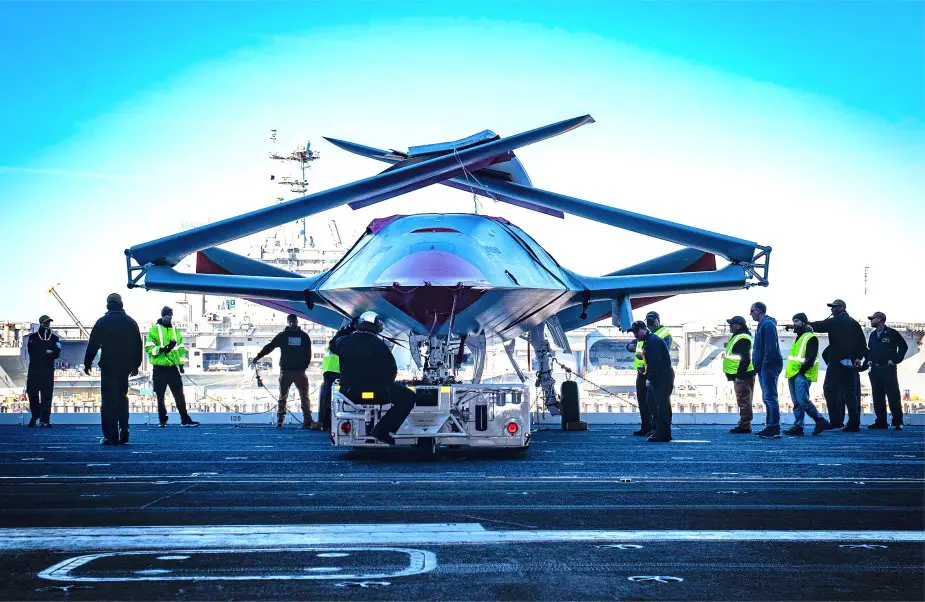Breaking news
US Navy's MQ-25 team completes new step.
According to information published by the U.S. DoD on July 5, 2022, the Navy’s Unmanned Carrier Aviation program office (PMA-268) conducted its first lab integration event at Pax River to demonstrate how the MQ-25's Ground Control Station (GCS) will command the unmanned aircraft in the carrier environment.
Follow Navy Recognition on Google News at this link
 Boeing MQ-25 Stingray Unmanned Aircraft System on USS George H.W. Bush (Picture source: US Navy)
Boeing MQ-25 Stingray Unmanned Aircraft System on USS George H.W. Bush (Picture source: US Navy)
The government team and its two prime industry partners led the effort at the program’s System Test and Integration Lab (STIL), where Lockheed Martin's GCS controlled Boeing's Hardware-in-the-Loop (HITL) air vehicle for the first time. The HITL utilizes aircraft hardware and software to provide a realistic surrogate for the air vehicle.
Maday said the team set a goal to send a basic command between the GCS and the HITL. In order to meet that objective, Boeing and Lockheed Martin needed to deliver functional software for the government to exercise the GCS, the HITL, and the network components allowing connectivity between the systems.
This fall the team plans to simulate a complete flight using the HTIL air vehicle and will also demonstrate switching connections “links” to the aircraft as well as adding other aircraft hardware and software into the mix.
The MD-5 GCS is part of the Unmanned Carrier Aviation Mission Control System (UMCS), the system-of-systems required for MQ-25A command and control.
UMCS also includes carrier and shore site infrastructure modifications, Navy-produced ancillary equipment, and integration with command, control, communications, computers, and intelligence (C4I) systems.
About MQ-25 Unmanned Aircraft System
Boeing's MQ-25 design is powered by one Rolls-Royce AE 3007N turbofan engine delivering 10,000 lbf (44 kN) of thrust; this is a variant of the engine used to power the Navy's MQ-4C Triton.
The Unmanned aircraft system is less stealthy than flying wing UAVs. It does feature a stealthy fuselage shaping, and a flush inlet to shield engine blades from radar, and V-tail.




























